This savory Arrabiata pasta uses pantry staples to give a classic Italian dish a hint of Asian fusion. One pot is all you need for a rich, saucy dinner experience that can easily be tailored to a vegan lifestyle! {Vegetarian, Dairy-Free Option, Vegan-Adaptable}
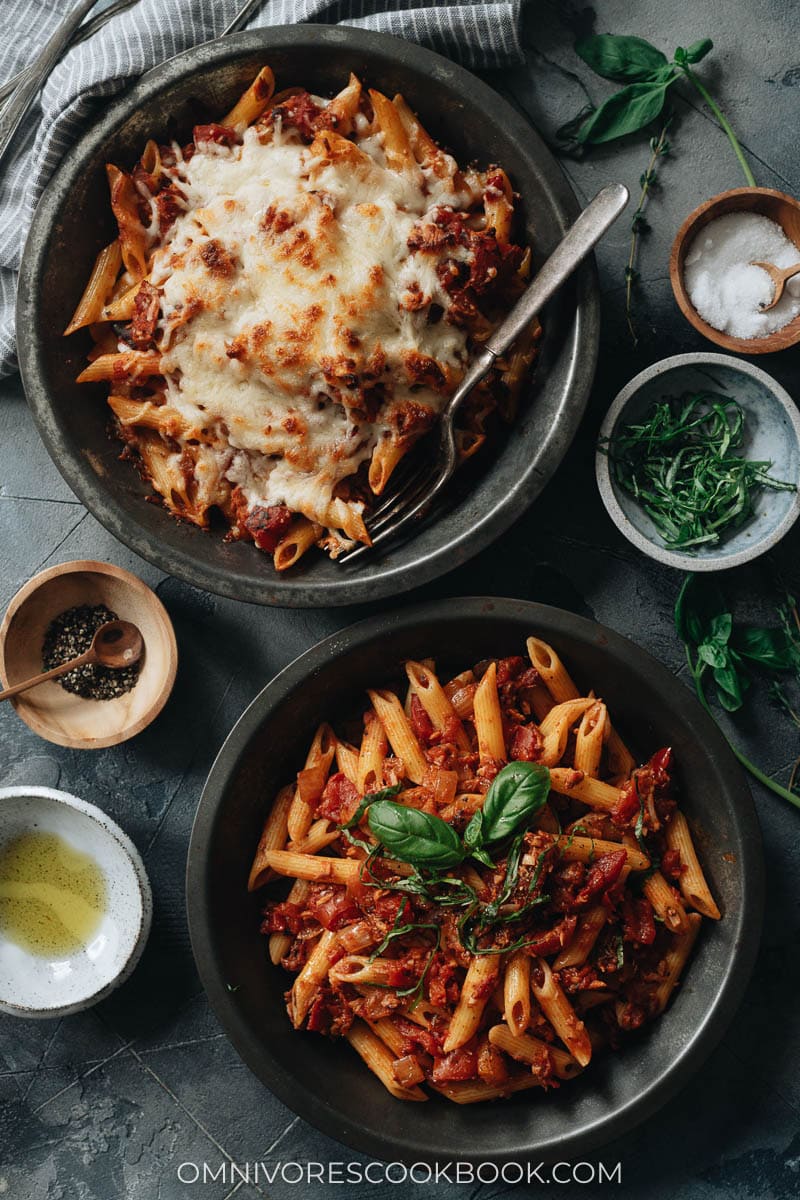
Since we’re all spending more time at home, finding ways to make what you have in your kitchen stretch is a good way to stay busy. If you keep looking in the pantry and can’t figure out what to make, my Chinese-style Arrabiata pasta with (or without!) tuna is for you.

Secret Ingredient
My secret for creating a rich, savory sauce is to add doubanjiang to the tomato sauce. You’ve got to taste it to believe it because it mimics the flavors of parmesan, making it a great option for dairy-free eaters.
What is Doubanjiang
Doubanjiang (豆瓣酱), also known as spicy fermented bean paste or broad bean sauce, is a key ingredient in Sichuan dishes such as Mapo Tofu. And it has a strong fermented savory, salty and spicy taste. I used it in the arrabiata sauce to give it a savory umami, like that of parmesan cheese. The great thing about doubanjiang is that it is so much cheaper than cheese and it lasts forever in your fridge.
You can find Douanjiang in Asian grocery stores or on Amazon here.
Other ingredients
Vegan adaptable
Arrabiata pasta is a very simple one-pot meal that makes use of those canned and dry goods in your pantry. The tuna adds more protein to the dish, though if you’re not a fan or want to keep it vegetarian or vegan-friendly, you can omit it. With or without tuna, it’s still a robust meal.

No fresh herbs, no problem
My Arrabiata pasta is very versatile with the herbs, too. You’ll use thyme and basil, though it will be delicious if you use dried herbs or fresh ones, all the same. Use what you can and you’ll discover a new way to do pasta. It’s a quick and upbeat meal that keeps you from having lots of dishes stacked up afterward.

Baked version
If you love cheese (guilty as charged), you can add mozzarella and follow my steps for the baked version. It gets even more scrumptious when you go all out. I realize that lately it can be hard to find some of these luxuries, but to cheese lovers with cheese on hand, take any excuse you can to add it on top.
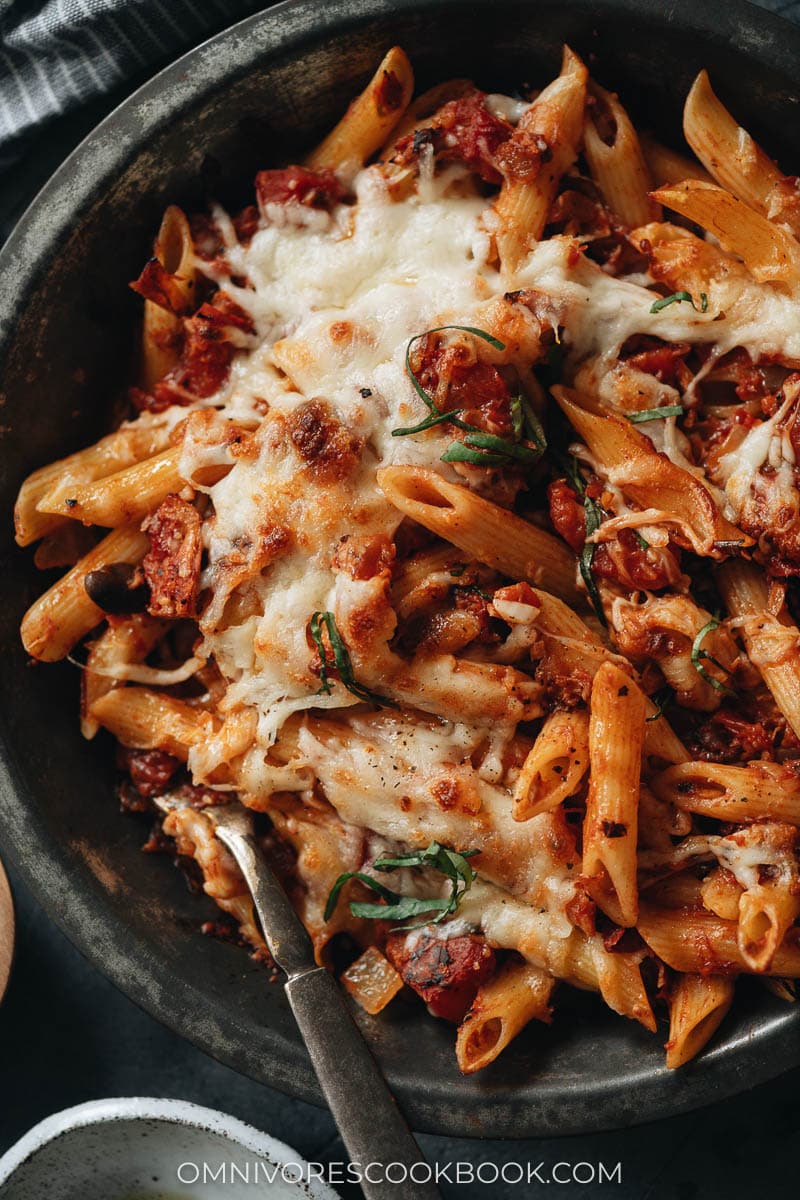
Cooking process
Cooking Arrabiata pasta is super easy.
- Saute the onions
- Toast the doubanjiang to release the fragrance.
- Add canned tomatoes and herbs, then simmer.
- Add the tuna (or skip it)
- Mix the sauce with cooked pasta
- (Optional) melt the cheese on it if you prefer the baked version.
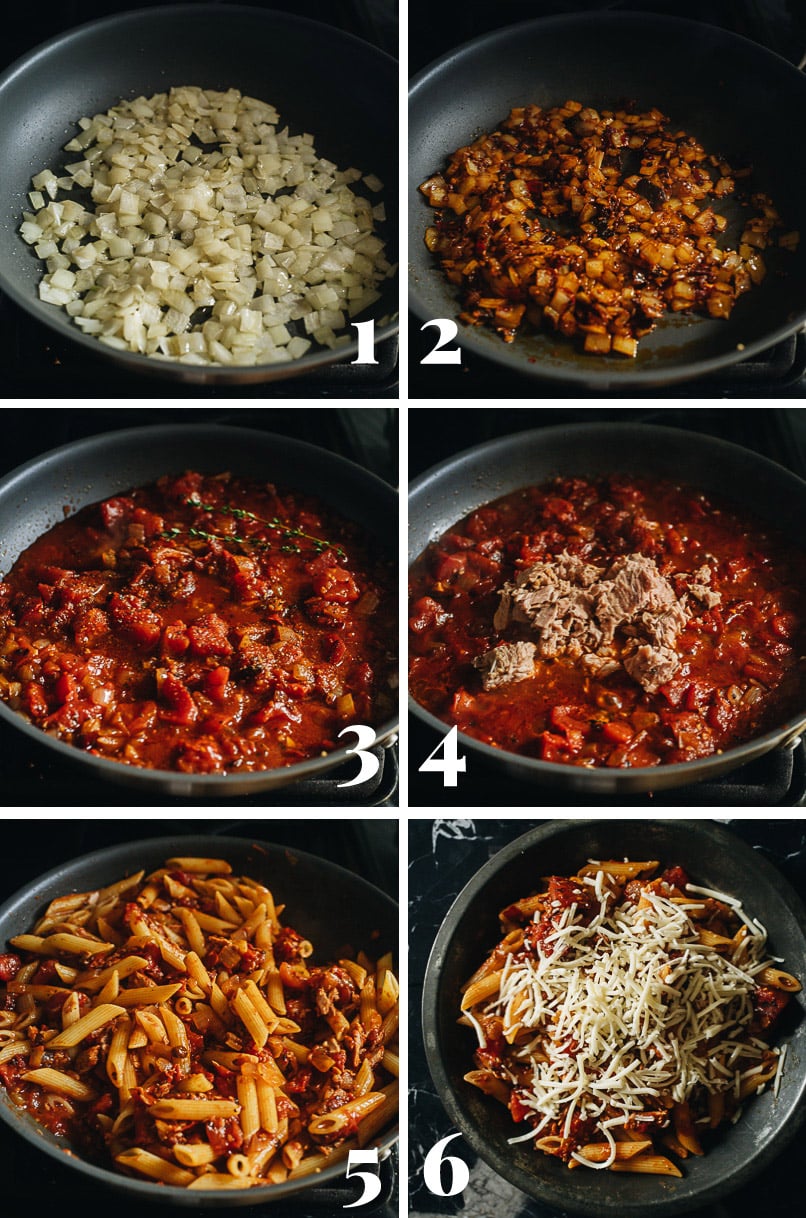
This one will be a keeper in your weeknight meal roster and is impressive enough for guests when you have them. A little wine pairing never hurts either!

Behind the scene secret
Believe it or not, this was the first post I published on Omnivore’s Cookbook back in 2013. And it was not Chinese nor Italian (lol). I included the original photo here just to remind myself how far this blog has come.
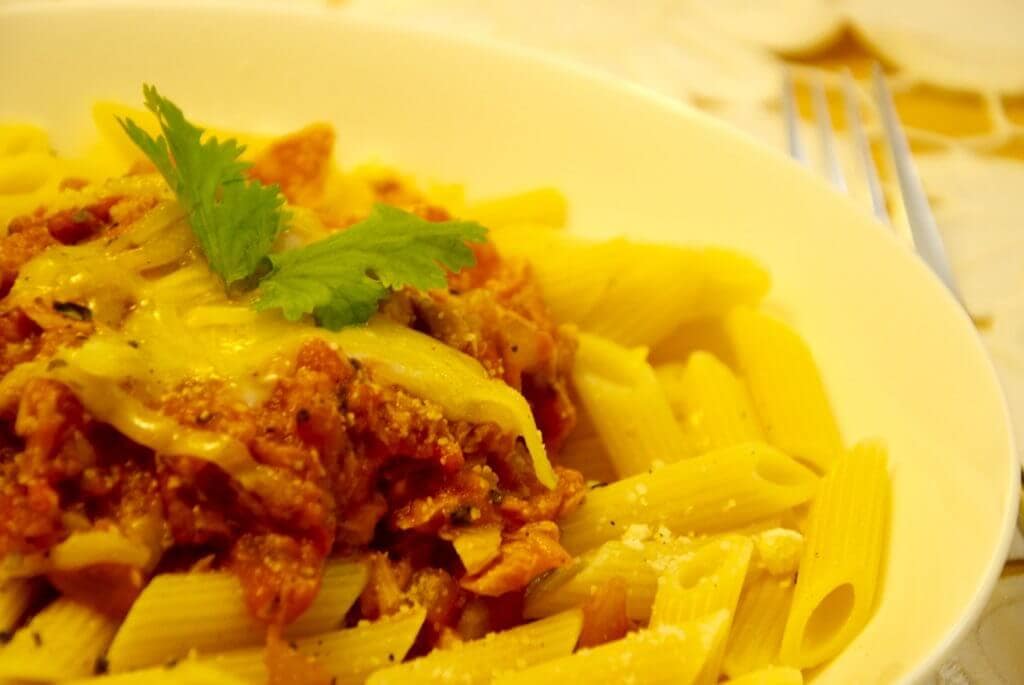
Want to learn more about Chinese Cooking? Sign up my newsletter to receive the 5-Day Chinese Cooking Crushing Course and recipe update!
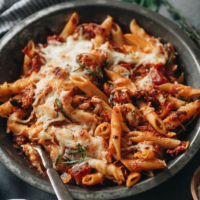
Chinese-Style Arrabiata Pasta (Two Ways)
Ingredients
- 1/2 box (8 oz/226 g) penne rigate (or your favorite pasta) (*Footnote 1)
Sauce
- 2 tablespoons olive oil
- 1/2 onion , diced
- 3 cloves garlic , minced
- 1 tablespoon doubanjiang (or 1 teaspoon red pepper flakes)
- 1 can (28 oz/794 g) tomato , diced or crushed
- 1/2 teaspoon dried thyme (or 2 sprigs fresh thyme)
- 1 teaspoon dried basil (or 4 fresh basil leaves, sliced)
- 1 teaspoon salt (or to taste)
- 1/2 teaspoon black pepper
- 1/8 teaspoon sugar
- 1 can (5 oz/142 g) tuna in water , drained (*Footnote 2) (Optional)
- 1 cup shredded mozzarella cheese (*Footnote 3) (Optional)
Instructions
- Bring a pot of heavily salted water to a boil. Cook the pasta according to the box instructions until al dente. Once done, reserve a 1/4 cup of the cooking water to add to your sauce later (*Footnote 4). Drain the pasta and run tap water over it to stop cooking.
- (Optional) Heat your oven to 375° F (190° C) if you plan to melt cheese on the pasta.
- While boiling the water, heat the olive oil over medium-high heat in a large skillet or saucepan until hot. Add the onion. Cook and stir occasionally, until it begins to soften, 3 minutes or so.
- Add the garlic and doubanjiang. Continue to cook and stir until fragrant, another 1 to 2 minutes.
- Add the tomatoes, thyme, basil (skip if using fresh basil), salt, pepper, and sugar. Bring to a boil and then reduce the heat to a simmer. Simmer until the sauce begins to thicken slightly, about 10 minutes.
- Add the tuna to the sauce. Stir to mix well. Add back the cooked pasta and the reserved 1/4 cup of pasta cooking liquid. Stir and cook for 1 minute. Taste the sauce and adjust the seasoning according to your preference.
- (Optional) To melt the cheese, transfer the cooked pasta with the sauce into a baking dish and spread the cheese on top. Bake at 375° F (190° C) until the cheese fully melts, 15 minutes or so.
- Serve hot as a main dish.
Notes
- This recipe is quite saucy. You can use up to a small box (12 oz / 340 g) of pasta if you wish.
- The dish will taste great without the tuna. You can skip it to make the recipe vegetarian, or skip the tuna and the cheese to make it vegan.
- The pasta tastes great without the cheese. If you’d like a more indulgent experience, use the cheese.
- If the instructions on your pasta box have a time range, use the minimum time. If there’s only one number listed, I would boil the pasta 1 minute less to get an al dente texture at the end of the cooking.
- The nutrition facts below are calculated based on 1 serving without the tuna or the cheese.
Nutrition
The recipe was published on July 10, 2013 and updated by April 3, 2020.
If you give this recipe a try, let us know! Leave a comment, rate it (once you’ve tried it), and take a picture and tag it @omnivorescookbook on Instagram! I’d love to see what you come up with.
More delicious noodle recipes
- Vegetable Lo Mein
- Japchae (Korean Sweet Potato Noodles)
- 30-Minute Salmon Noodle Bowl with Coleslaw
- Thai Peanut Butter Ramen
- 15-Minute Korean Noodle Soup
Lilja Walter is a part of the Omnivore’s Cookbook team and worked closely with Maggie to develop and test this recipe.













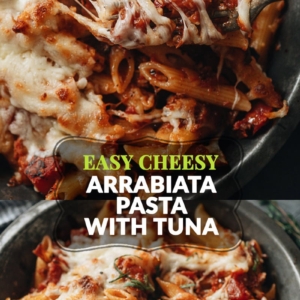
I thought this recipe was excellent. Spicier than I expected, but that’s good since I love spicy! Reading the recipe, I felt that there wasn’t enough tuna, so I doubled the amount of tuna, and it worked perfectly for me!